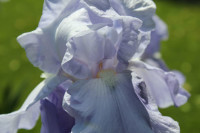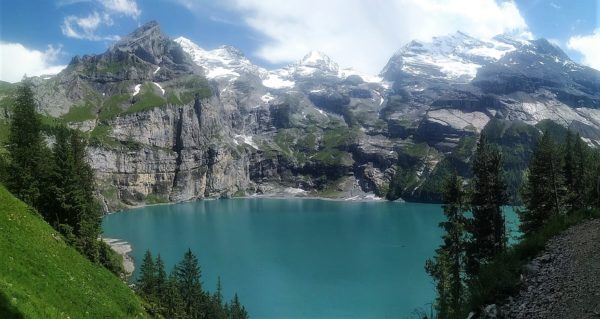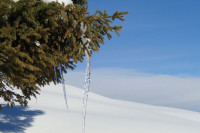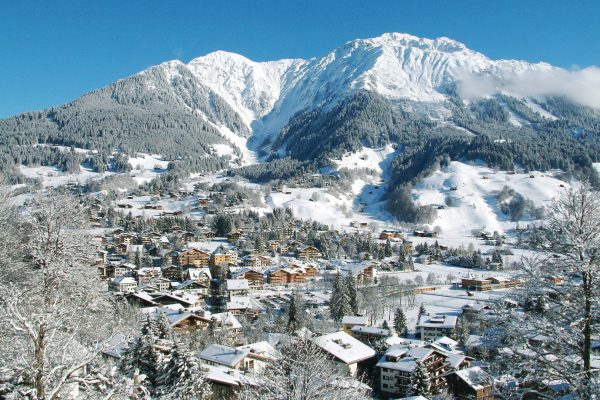Featured articles
Ticino: grottoes and chestnut trees (Switzerland)
When you go to Ticino, the Southern canton of Switzerland, bordering Italy, you will see many grottoes and chestnut trees.
Let’s learn more about them.
About the grottoes of Ticino:
If you have never heard of the word grottoes before, it comes from the word grotte meaning cave. It is a tavern, a place to eat, to drink, to stay cool, to talk to others and most of the time not easy to reach.
Many restaurants in Ticino call their place Grottoes but real grottoes have granite benches and tables. They used to have wine caves. Families stored their meat and cheese there.
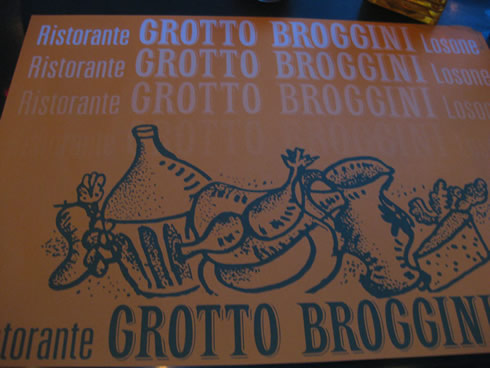
Grotto Broggini in Losone
Most of the time the food is simple such as pasta, risotto or roasted chicken.
The one I visited had many long tables with chairs. It felt like a beer garden. In a grotto, you can drink local wine from Ticino.
Grottoes are opened from March through October.
About the chestnuts of Ticino:
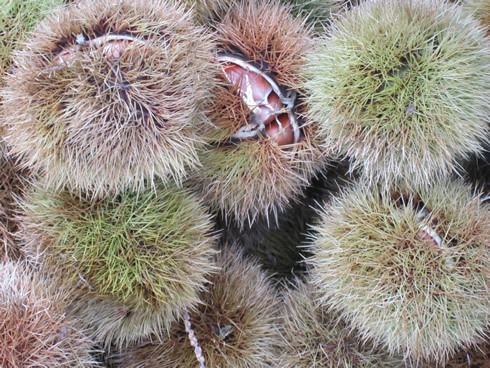
chestnuts on display in a market
Chestnuts are important to the canton of Ticino since a long time now. In the past it saved people’s lives during the harsh winters. Chestnut flour was popular and often used. Having chestnuts and eating them was the symbol for life.
Chestnuts are excellent to gain energy when you need it. People used to eat the value of 15 trees per person in half a year.
In Ticino the large chestnuts are used right away and the others are dried or ground. There are many different types. You may have heard of the Marroni, roasted on the cities squares in the Fall and Winter.
Owners of chestnut trees can pick up their chestnuts until the date issued by their region. After that, anyone can pick up the fruits on the ground.
Desserts such as pies or marrons glacés (caramelized chestnuts, popular in the Winter and for Christmas) are made.
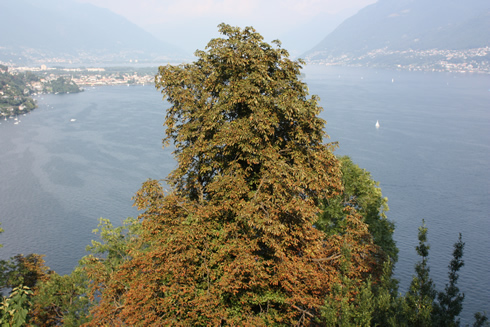
Large chestnut tree in the town of Sopra Ascona
The chestnut forest in Ticino dates back from the Bronze Age so it is quite old. In 1965 out of 209,703 hectares of forest 39,026 acres were for chestnut trees. Today there is an area of 26,000 hectares in the entire country.
Most chestnut trees in Switzerland are in Ticino. The second biggest chestnut forest is in Heidiland in Murg. Another forest is in Engadin in the region of Bergell. Other forests are in the cantons of Lucerne, Vaud up to Valais. Switzerland also imports chestnuts from Italy.
Trees can live up to 1000 years and are found between 656 feet and 3280 feet (200 m to 1000 m). When a tree is planted it takes about 7 years before fruits come out.
A chestnut tree can grow up to 114 feet (35 meters).
Chestnuts trees are in danger. In 2009, Beat Forster, a forest entomologist at The Swiss Federal Institute for Forest Snow and Landscape Research, said on the radio that the trees are not doing well, after being attacked by the oriental chestnut gall wasp. It came from China, Japan, then Korea and Italy in 2002. It is not good for the older trees harder to cut and to fix. Less fruits will be on the trees.
For those who like to walk and are interested in chestnuts there are a few trails to discover the chestnuts forests. One trail, called the Chestnut Walk (Sentiero del castagno), is a new trail since the beginning of 2000.
On this trail you can see the monumental trees, about 300 them.The international Society for Horticultural Science has recently started cataloging the large trees. To be counted for a monumental tree the girth has to be larger than 22 feet (7 m) and have a a height of 4 feet 31 (130 cm) above ground level. Monumental tree are found above 2296 meters (700 m).
A total of 300 individual trees were registered. It takes about 5 hours to walk the trail. It goes from the village of Arosio in the valley of Muggio in Malcantone. You can see a monumental chestnut tree, which is in poor shape.

